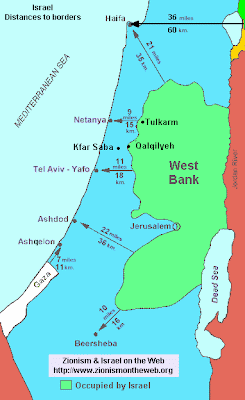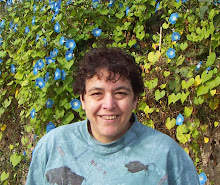As you read through this last part, think about the policy that the United States government long held about the Native Americans. Forced off their land, forced to stop practicing their religious rituals, herded on to large reservations in locations of poor land quality, the Native Americans became diminished for about a century. Then, with the civil rights movement of the 1960s and government programs to improve education and employment opportunities, the tribes began to grow again. It was an economic boon, though, the loophole of the casino laws that ended up making the significant change for many. How different is this situation? Can we take what we learned by our own shameful chapter of history and help Israel and the Palestinians possibly find a way?
*********************************************
To recap, in 1947 the British announced it would be leaving the land and the United Nations then voted to partition it into Jewish and Arab states. The Arab nations voted against this partition and then, in 1948, armies from neighboring Arab countries invaded the new Jewish State of Israel. Prior to and  during that war, an estimated 500,000 Muslim and Christian Arabs left, fully believing the advice they were getting that they could return in a few days would happen.
during that war, an estimated 500,000 Muslim and Christian Arabs left, fully believing the advice they were getting that they could return in a few days would happen.
The governments of the countries that ended up with refugees did not want them to be absorbed into their population. When the refugees could not return, camps were set up.
~~~~~~~~~~~~~~~~~~~~~~~~~~~~~~~~~~~~~~~~~~~~~~~~~~
At the same time, about 500,000 Jews living in Arab or Muslim nations needed to leave. Most settled in Israel and were assisted by the Israeli government and became full citizens, learning a new language and getting educated.
~~~~~~~~~~~~~~~~~~~~
So, today finger pointing is going on---who was responsible for this dispersion of Arab residents in what had become the Jewish State of Israel? The only fair thing to do is to take quotes from the time and from neutral sources and from Arab leadership.
"Every effort is being made by the Jews to persuade the Arab populace to stay and carry on with their normal lives, to get their shops and businesses open and to be assured that their lives and interests will be safe." -- Haifa District HQ of the British Police, April 26, 1948, (quoted in Battleground by Samuel Katz).
"The most potent factor [in the flight of Palestinians] was the announcements made over the air by the Arab-"It must not be forgotten that the Arab Higher Committee encouraged the refugees' flight from their homes in Jaffa, Haifa, and Jerusalem." -- Near East Arabic Broadcasting Station, Cyprus, April 3, 1949
In listing the reasons for the Arab failure in 1948, Khaled al-Azm (Syrian Prime Minister) notes that "Since 1948, it is we who have demanded the return of the refugees, while it is we who made them leave. We brought disaster upon a million Arab refugees by inviting them and bringing pressure on them to leave. We have accustomed them to begging...we have participated in lowering their morale and social level...Then we exploited them in executing crimes of murder, arson and throwing stones upon men, women and children...all this in the service of political purposes..." -- Khaled el-Azm, Syrian prime minister after the 1948 War, in his 1972 memoirs, published in 1973.
"The Arab states which had encouraged the Palestine Arabs to leave their homes temporarily in order to be out of the way of the Arab invasion armies, have failed to keep their promise to help these refugees." -- The Jordanian daily newspaper Falastin, February 19, 1949.
"Who brought the Palestinians to Lebanon as refugees, suffering now from the malign attitude of newspapers and communal leaders, who have neither honor nor conscience? Who brought them over in dire straits and penniless, after they lost their honor? The Arab states, and Lebanon amongst them, did it." -- The Beirut Muslim weekly Kul-Shay, August 19, 1951
~~~~~~~~~~~~~~~~~~~~~~~~~~
The contrast between the way Jewish refugees to Israel were welcomed compared with the reception of Palestinian refugees in Arab countries is even starker when one considers the difference in cultural and geographic dislocation experienced by the two groups. Most Jewish refugees traveled hundreds or thousands of miles to a tiny country whose inhabitants spoke a different language.
Most Arab refugees never left Palestine at all; they traveled a few miles to the other side of the truce line, remaining inside the vast Arab nation that they were part of linguistically, culturally and ethnically. But the governments in the lands where they went did not absorb them into population. With the exception of the Kingdom of Jordan, they parked them in the camps and rewrote the history, erasing in their culture their duplicity in the evacuation of the Palestinians.
In December 1948 the United Nations issued Resolution 194 which resolves, in part that refugees wishing to return to their homes and live at peace with their neighbors should be permitted to do so at the earliest practicable date, and that compensation should be paid for property of those choosing not to return and for loss of or damage to property which under principles of international law or in equity should be made good by Governments or authorities responsible. (emphasis by me to show that the United Nations expected the refugees to be returning peacefully with peaceful intent. As there has been little peace in all these years, is it any wonder why Israel finds it hard to believe it will happen magically if land is given back?))
This return policy has been a major issue since that time. Israel did permit about 100,000 people back to rejoin family who had remained, and financially gave them restitution for land and property taken. More people have been unable to return although the concept to rejoin family has been offered several times.
As the Palestinian population is growing rapidly and is now in its third generation in the camps, the issue revolves around the Palestinian’s desire to return and Israel’s need to have peaceful citizens. The Palestinians expect Israel will support them financially and pay restitution. (No restitution was paid to Jews forced to leave Arab nations.) The United Nations Resolution 194 indicates the financial burden should be on the parties responsible, but as we have seen from the quotes, the Arab nations and some leadership have recognized their responsibility in urging the massive population movement in 1948.
According to a recommendation by the International Crisis Group, the Palestinian refugee camps in Lebanon need to be addressed as an issue of unrest in the Middle East even without waiting for a solution with Israel. They point that unrest within the Lebanon camps contributed to the Lebanese Civil War (1975-1990), the invasion by Israel in 1982, and Syria’s involvement in an attempt to control the PLO (Palestinian Liberation Organization.) The first recommendation is to provide the Palestinians within the camps there Lebanonese citizenship, permitting them to vote and have full rights. The International Crisis Group recognizes that as the Palestinians are currently fragmented and are used by various political groups for their own ends, there is little leadership from the actual people who are affected.
Once again we look to the concept of the lack of Palestinian leadership. The people are living miles apart; they have never recognized themselves as a nation until the world stage, responding to very strong noise, said hey! Here is a group of people that need to be recognized. They have been used as political pawns for over six decades. People living in the refugee camps are living in dire poverty with crowded housing, poor health care, questionable education, and lack of employment possibilities. No wonder they are angry.
The concept of a two state solution was proposed years ago but in reality, no one likes it. In this solution, the land would be divided again, along the lines of the original partition for the most part but primarily with the West Bank area and the Gaza Strip part of a new Palestinian state. Both sides want Jerusalem, but the Israelis say it will never be divided again.
The problem with this concept from the Israeli standpoint is that the borders are not well defended. Remember the map with the mileage from the borders to major population centers? Modern rockets and missiles make new borders along the uplands not feasible.
~~~~~~~~~~~~~~~~~~~~~~~~~~~~~~~~~~~~~~
From the Palestinian view, why should they go live in the West Bank or the Gaza Strip if their families once lived in an area now occupied by Jews? They want to be permitted to move there, buy a house in that area. Palestinians want a one state solution. They want to be allowed to move back to the area where their families once lived, now in the State of Israel.
Israel has two main problems with this. If they grant citizenship to millions of Palestinian refugees, in time the population growth will grant the Palestinians a majority. The State of Israel is a Jewish nation, and with the democratic process in place, the land would become an Islamic nation. Secondly, if the Palestinians are not offered full citizenship, the process will represent the apartheid practice held in South Africa for years. Neither option is healthy.
In any religion, when there are fundamental practices in power, there is little tolerance for anything that is different. We have observed how the nations of Iran and Afghanistan have had major upheavals because of religious intolerance within a Muslim nation. We have seen how the difference in belief systems in Iraq continue to cause issues on how to help that nation learn to work together.
In a region where radical Arab leaders have sworn to destroy the Jewish State of Israel, there seems no way to find a way through the mire. The Palestinians want Israel to give them land for a vague promise that there will be recognition and peace.
So, I am as stymied as I was before, but a bit better educated. And now I feel I can make comments that are thoughtful and possibly through provoking when in discussion. Please add your thoughts….the peace process may very much take a grass roots movement to succeed.













 Displaced Persons Camp 1947 Israel
Displaced Persons Camp 1947 Israel







 In the late 1880s the movement to recognize that Jews are a people who deserve a land where they can live in pe
In the late 1880s the movement to recognize that Jews are a people who deserve a land where they can live in pe





